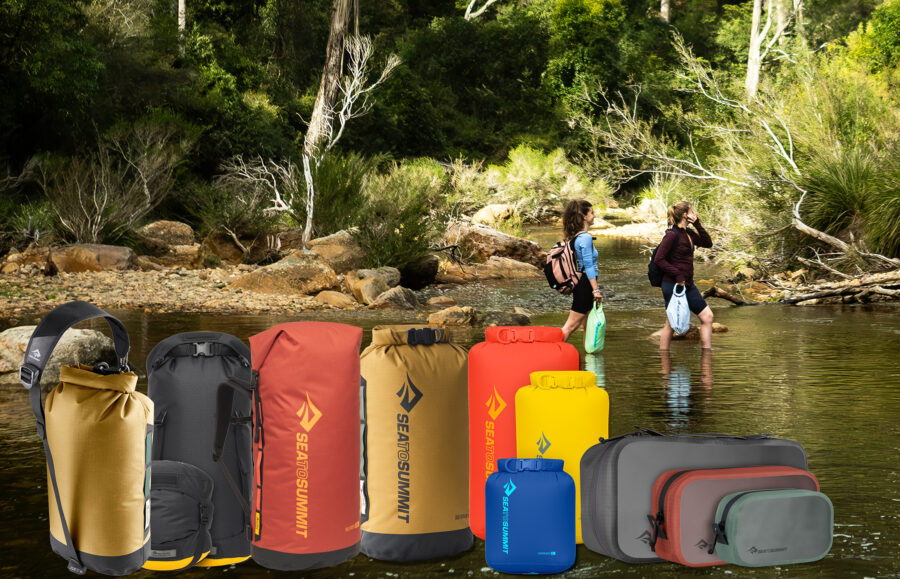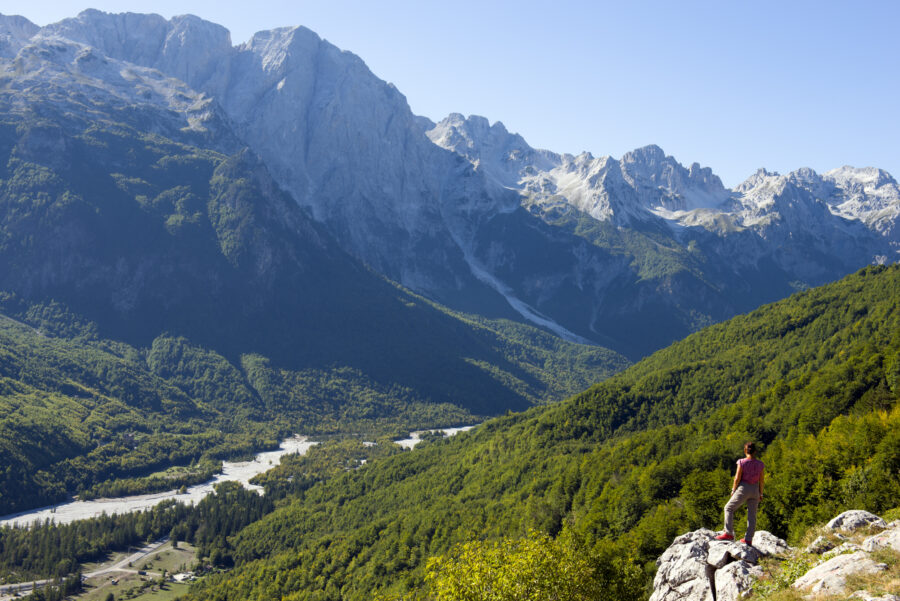The 23 Ngā Haerenga Great Rides of New Zealand cover a vast range of terrain and territory – towns to mountains, coastlines to gorges, forests to lakes – but even within this collection of magnificent bike trips there are degrees of remoteness and isolation. Some rides are mild, and others are truly wild, crossing mountain ranges, burrowing deep into forest and pedalling through secluded areas that can be seen in few other ways.
Prime among these on the North Island are the Timber Trail Great Ride, which is a journey through sky-scraping forests, along the course of an old timber tramway and across one of New Zealand’s longest suspension bridges, while the multi-pronged Motu Trails Great Ride crosses coastal dunes in sight of a steaming volcanic island and disappears into little-seen forests along the country’s easternmost shores.
In the South Island, the West Coast Wilderness Trail Great Ride is a surprisingly gentle brush with the west coast’s wild ways, following driftwood-strewn beaches and rainforest as immense as the region’s gold-mining tales, all in sight of the snowcapped Southern Alps. Then there are the mountains themselves, crossed on the epic Old Ghost Road Great Ride, the completion of a trail begun, but never finished, by gold miners in the 19th century and now one of the best mountain biking trips you could ever imagine.
Timber Trail Great Ride
Distance: 85km, 2 days
Grading: Intermediate (Grade 3)
Bike: Mountain bike
Getting there: The closest towns to the Bennett Road trail hub in Ongarue are Te Kuiti and Taumarunui. Ongarue is a 3.5-hour drive from Auckland along SH4. The Northern Explorer train from Auckland stops in Taumarunui, and bikes can be checked in as excess luggage when booking..
Trail Conditions: Timber Trail
The Timber Trail, part of the 23 Ngā Haerenga Great Rides of New Zealand, is one of the best two-day backcountry adventures in New Zealand. Stretching for 85km through the ancient forests of Pureora Forest Park in the Ruapehu region (which is home to two Great Rides), the ride traces the paths of early Māori and follows trails carved by pioneering loggers, with remnants of bush tramways and machinery offering a glimpse into the region’s past.

Beginning at Pureora, the trail makes a 15km climb through towering podocarp forest, where rimu and tōtara trees rise like pillars, reaching the ride’s high point (971m) high on the slopes of Mt Pureora. From here, it’s largely downhill into Piropiro, an old mill town that forms a near-midway accommodation stop, offering everything from comfortable lodges to luxury glamping and breaking the ride neatly into two days.
The Timber Trail is lined with eight suspension bridges that span deep valleys and tumbling rivers, and the longest, Maramataha Bridge, is crossed just beyond Piropiro. At 141m in length, it’s the third-longest suspension bridge in New Zealand – heady times guaranteed.
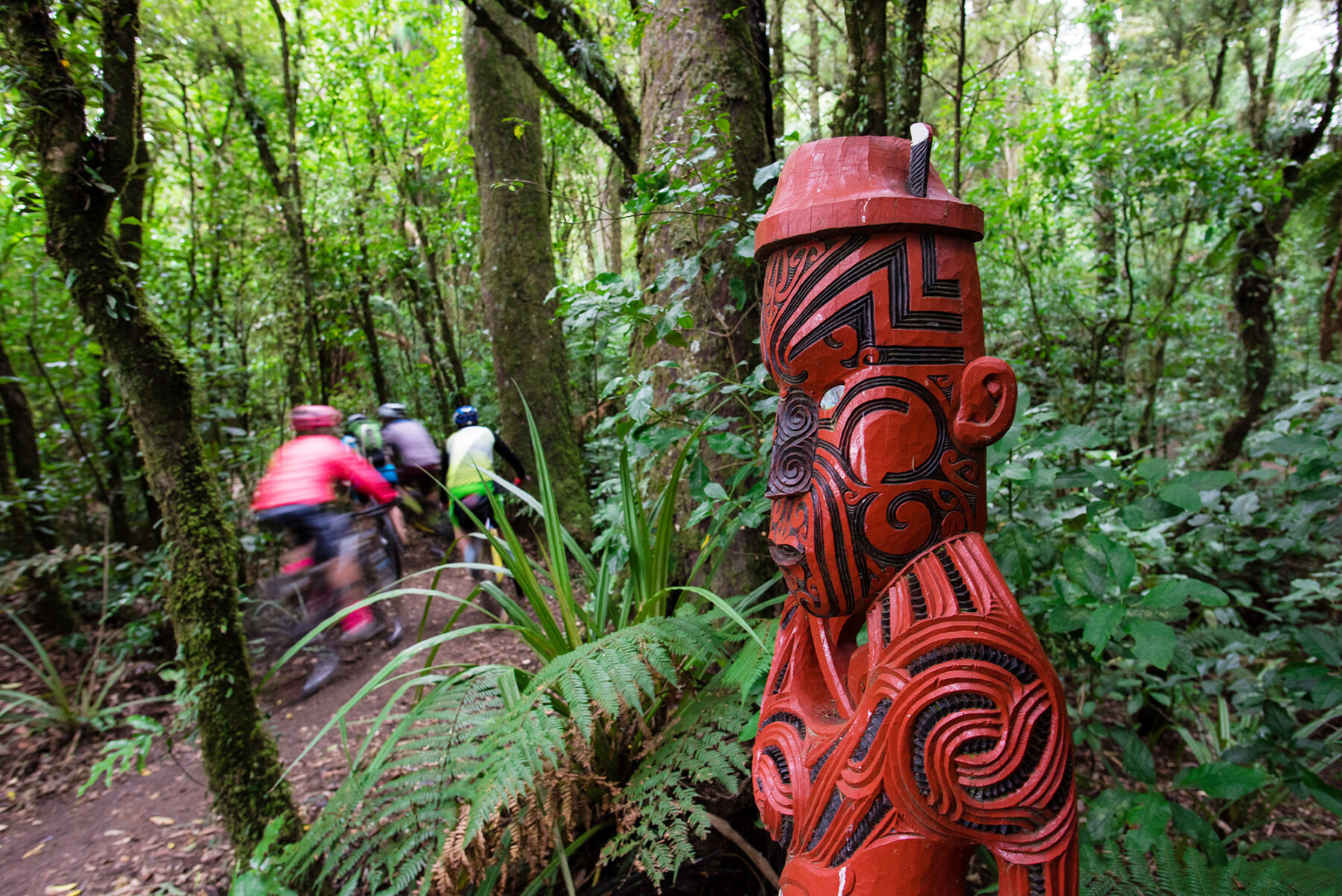
Beyond here, the Timber Trail joins an old bush tramway, with another 18 bridges (including three more suspension bridges) still ahead. The Historic No 11 camp still has an original loggers’ hut, complete with graffiti from the day, while as you approach the trail’s end at Ongarue, it’s a unique cycling experience to pedal through the Ongarue Spiral, a loop in the tramway that’s completed through a tunnel designed to ease the gradient for trams.
“What makes the Timber Trail distinctive is the way it blends adventure, history and nature into one unforgettable ride,” says Trail Champion Lynley Twyman. “There’s a powerful stillness here — the sweep of kererū overhead, the distant call of kākā, and the sense of being part of something timeless. Every bridge crossed and hill climbed feels like a step deeper into the heart of the ngahere (forest) and into the story of this land.”
Highlights
- Immerse yourself in a two-day wilderness ride with one-of-a-kind stays.
- Break the opening climb with a short walk to Mt Pureora trig (1135m).
- Ride through a magical cloud forest, where the stunted trees are strung with moss.
- Feel the swing on Maramataha Bridge, New Zealand’s third-longest suspension bridge.
- Discover engineering ingenuity in the Ongarue Spiral.
Motu Trails Great Ride
Distance: 10km to 121km, half-day to 3 days
Grading: Easy-Advanced (Grade 2-4)
Bike: Hybrid or touring (Dune Trail), mountain bike (Motu and Pākihi Track)
Getting there: Ōpōtiki is around 4.5 hours by car from Auckland (and two hours from Rotorua), and Gisborne is 6.5 hours from Auckland (four hours from Rotorua). Both towns can be reached on direct InterCity buses from Auckland.
Trail Conditions: Motu Trails
The Motu Trails, part of the 23 Ngā Haerenga Great Rides of New Zealand, are a network of three connected trails near to New Zealand’s easternmost edge, providing a range of challenges and scenery through one of the country’s most remote and rugged areas.

“You’re really deep in the wilderness, and it gives you a unique perspective of the region,” says Motu Trails trustee Haimona Ngata. “Motu Trails has its own Wairua (meaning ‘spirit’ in Te Ao Māori, the Māori world view) and at times it almost feels like it’s alive, so you need to respect the environment at all times.”
The 10km Dunes Trail is the perfect introduction to the Motu Trails, heading along the beach-lined shores east of Ōpōtiki. The easy trail regularly pops up atop sand dunes, providing great views out to Moutohorā (Whale Island), steaming Whakaari (White Island) and the Raukūmara Ranges.
At its end, the Dunes Trail connects into the 67km Motu Road Trail, which takes a hilly turn inland through farmland and remote bush country, following part of the original vehicle road between Gisborne and the eastern Bay of Plenty.
The most challenging of the trails is remote and fun 20km Pākihi Track, a pack track cut in the early 1900s that swoops through fern-filled forest and beside gorgeous river pools as it makes a downhill singletrack run from Motu Road to Ōpōtiki. Pākihi is an advanced mountain biking route, suiting riders with good skills and considerable mountain biking experience.
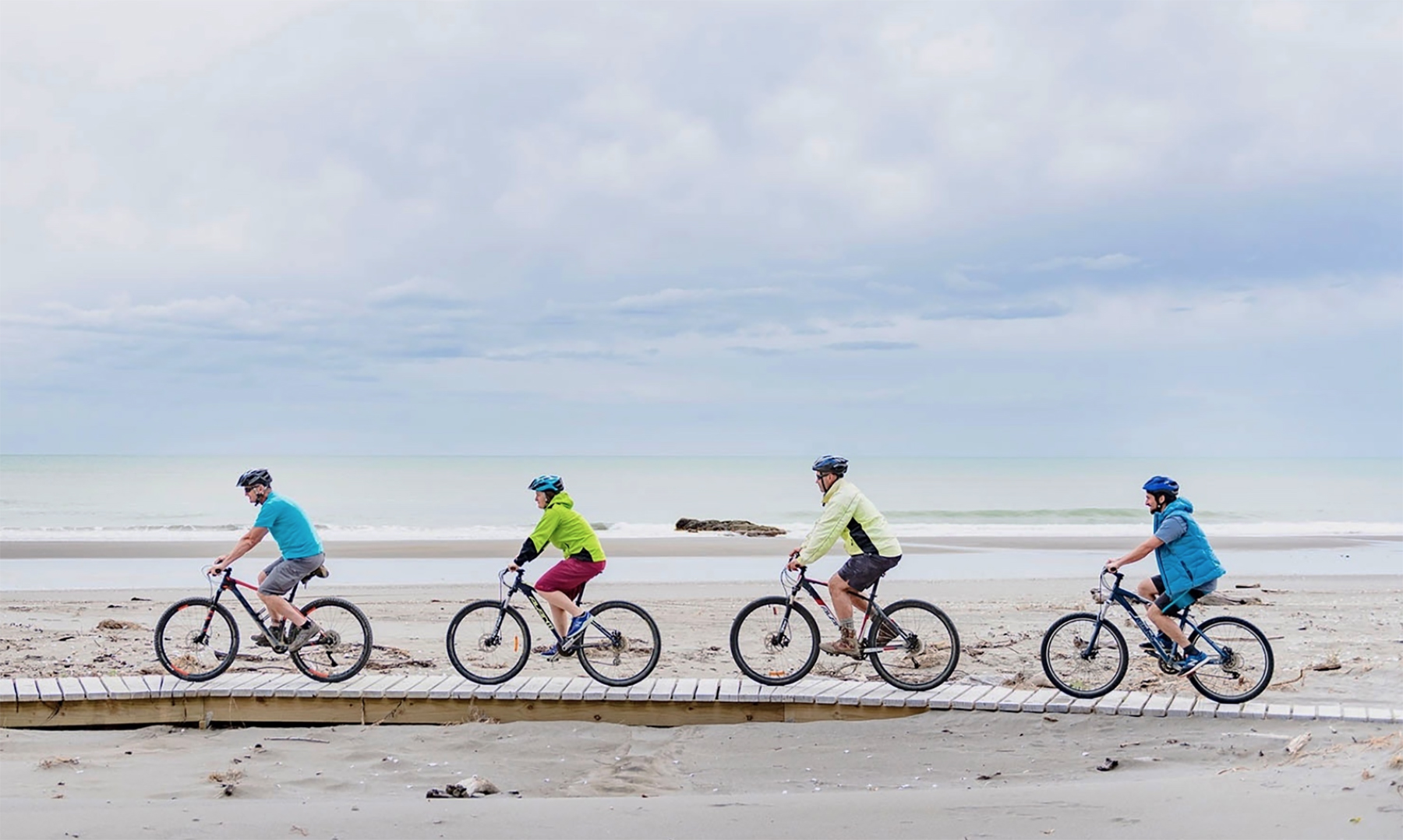
For the full Motu Trails experience, there’s a hilly two-day, 121km loop incorporating the Dunes Trail, Motu Road Trail and Pākihi Track (or returning back down Motu Road), and overnighting in Motu village.
“There’s something for everyone on the Motu Trails,” Ngata says. “Whether you’re a seasoned professional, a beginner cyclist, e-bike, family group, school group, bikepacking, gravel, mountain bike, fast or slow, you can do it all on Motu Trails.”
Highlights
- Pedalling across the tops of the namesake dunes on the Dunes Trail.
- Cycling past photogenic Māori carved poles.
- Singletrack descent on the Pākihi Track.
- A mix of ocean, forest and mountain views.
West Coast Wilderness Trail Great Ride
Distance: 133km, 4-5 days
Grading: Easy (Grade 2)
Bike: Hybrid, ebike, mountain bike
Getting there: Greymouth and Hokitika are the largest towns along the trail. Greymouth is around a three-hour drive from Christchurch and can also be reached from Christchurch on the TranzAlpine train. Air New Zealand has two daily flights between Christchurch and Hokitika.
Trail Conditions: West Coast Wilderness Trail
The West Coast Wilderness Trail, part of the 23 Ngā Haerenga Great Rides of New Zealand, is a ride through one of the wildest places in New Zealand – the west coast of the South Island – but for cyclists, the 133km trail is every bit as gentle as the scenery is wild. The country’s most accessible wilderness ride is a journey through great green forests, past fierce ocean beaches and into the golden history of the region, but it does so on trails and terrain suited to all levels of cyclists.

“The trail is able to be ridden by most ability levels, including those in wheelchairs and on adaptive bikes,” says Trail Coordinator Jackie Gurden. “Our youngest known rider to complete the full trail was five, and the oldest came from Australia with three generations of his family to celebrate his 90th birthday.”
Dotted with towns, including Greymouth, Kumara, Hokitika and Ross, the trail – around 120km of which is on smooth gravel trails – can be parcelled into short and easy days, allowing plenty of time to explore and indulge in the magnificent surrounds. You can climb into the forest canopy on elevated walkways, pause to savour the views as you emerge from forest into farmland in the wide and beautiful Arahura Valley, take an invigorating swim in sight of the Southern Alps in Lake Kaniere, or simply slow to enjoy the journey as you pedal beside the Kaniere Water Race, cut by 19th-century gold miners.
Flanked by stunning views of the Southern Alps to the east and the Tasman Sea to the west, the West Coast Wilderness Trail truly is a memorable experience.
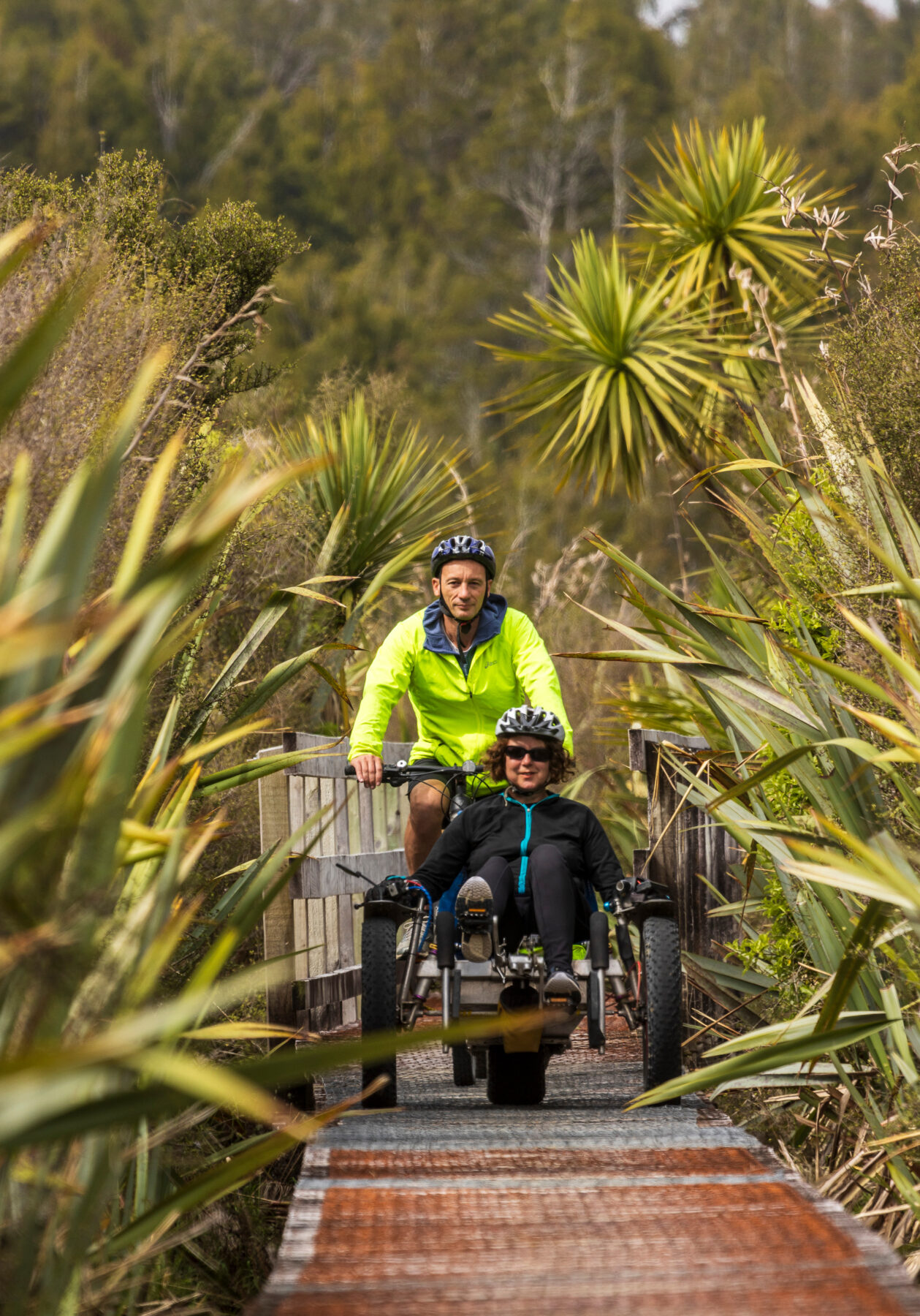
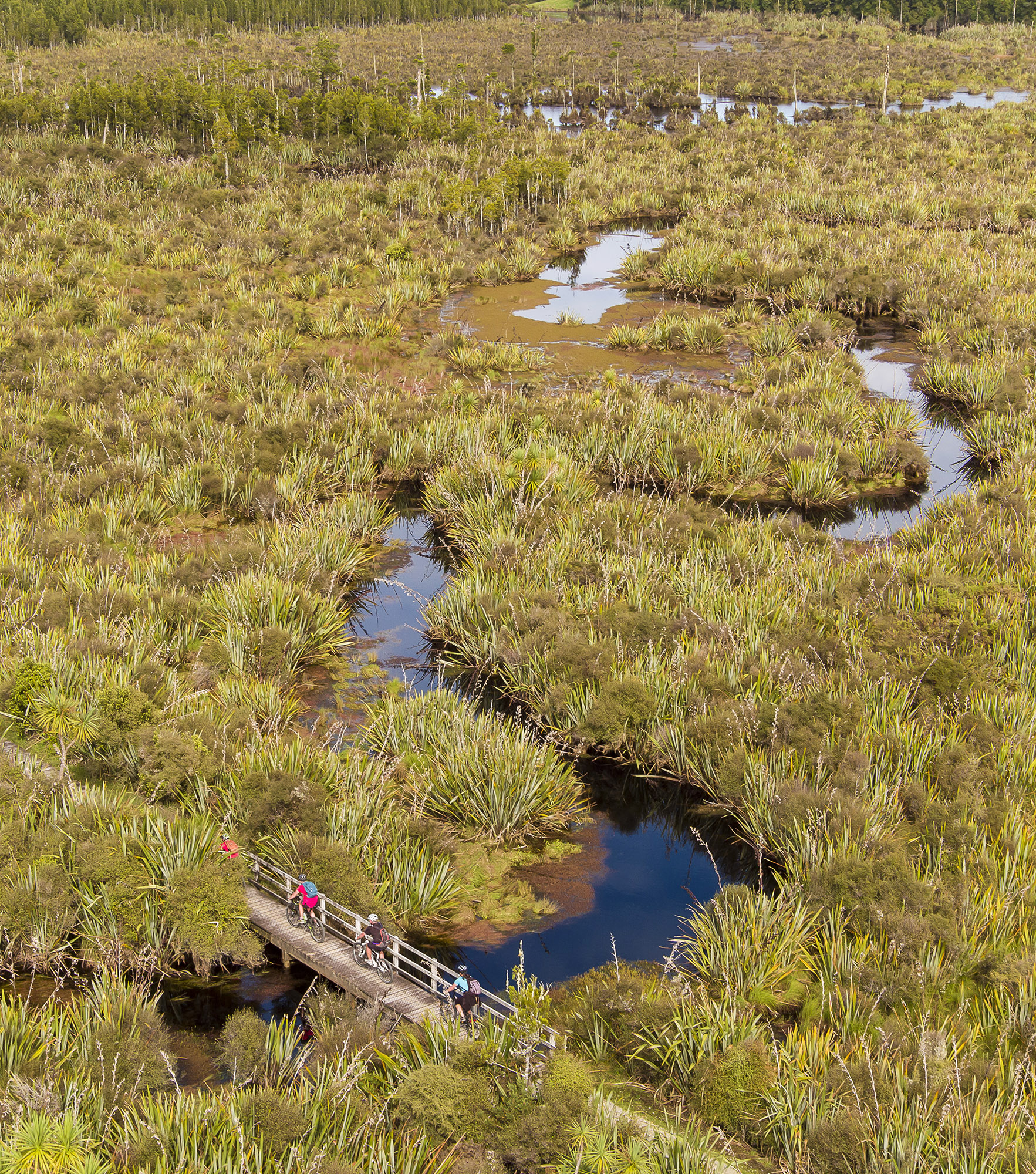
“The diversity of landscapes is second to none,” Gurden says. “Vast driftwood-strewn beaches, rainforests, snowcapped mountains, pristine rivers, lakes and wetlands, and some of New Zealand’s highest-value scenic reserves that are home to special flora, fauna and fungi. I still pinch myself at the beauty when I’m on the trail.”
Highlights
- Trail views of the snowcapped Southern Alps.
- Ascend 47m into the treetops along the West Coast Treetop Walkway.
- Discover the region’s pounamu (jade) past at Māwhera Pā in Greymouth.
- Pedal 10km along the Kaniere Water Race, built in 1875 to supply water to gold mines.
- Go gold panning at Ross, where the largest gold nugget found in NZ – the 3kg Hon Roddy – was unearthed in 1909. The nugget was gifted to King George V, who melted it down to make a tea service.
The Old Ghost Road Great Ride
Distance: 85km, 2-4 days
Grading: Advanced-Expert (Grade 4-5)
Bike: mountain bike
Getting there: Westport is the nearest larger town to the trail. It’s a 4.5-hour drive from Christchurch, and three hours from Nelson. InterCity buses from Greymouth stop in Westport. Several local companies offer shuttle services to the start and end of the Old Ghost Road.
Trail Conditions: Old Ghost Road
The Old Ghost Road, part of the 23 Ngā Haerenga Great Rides of New Zealand, is celebrating its 10th anniversary in the 2025/26 summer, marking the moment a trail was completed that miners tried to construct over the mountains in the 19th century. The fact that they failed is indicative of the challenging nature of the wilderness beyond the Buller Gorge, where the 85km Old Ghost Road begins its mountain biking journey.

“Even with the benefit of a century passing, plus modern tools, machinery and helicopters, creating The Old Ghost Road was a technical and logistical behemoth,” says Mōkihinui-Lyell Backcountry Trust chairperson Phil Rossiter.
The singletrack ride is suited only to fit and experienced riders, which is evident from the outset as it begins the longest climb of the ride, ascending 765m to Lyell Saddle Hut, from where the uphill only continues.
A broken anvil just beyond marks the spot where the original road builders gave up their efforts, but the modern Old Ghost Road continues on up to the exposed tops of the Lyell Range. Here, the ride provides some of the world’s great mountain bike views as it undulates across the range’s heights to Ghost Lake Hut and the tight, squiggling descent through rock gardens immediately beyond. Another short climb onto Skyline Ridge is rewarded with a long and fun descent into the Stern Valley and a date with the ominously named Boneyard, littered with boulders.

The finish of the ride is another moment in bike beauty, as the Old Ghost Road squeezes through an impressive gorge above the Mōkihinui River.
“The Old Ghost Road is long, remote and rugged, and it’s somewhat difficult to believe – until you’re doing it – that you can make your way through that landscape on a mountain bike,” Rossiter says. “That contributes to a deeply rewarding physical and emotional experience.”
Highlights
- Weaving between the massive boulders that give the Boneyard its name.
- Pedalling past rusted relics from the region’s gold mining days.
- Lofty, jaw-dropping views along the trail.
- Perfectly positioned huts and campsites (the huts are popular, so book well ahead).
- Celebrating the ride’s end with a night at Rough and Tumble Bush Lodge, right at the finish point and operated by the community group that built the Old Ghost Road.


